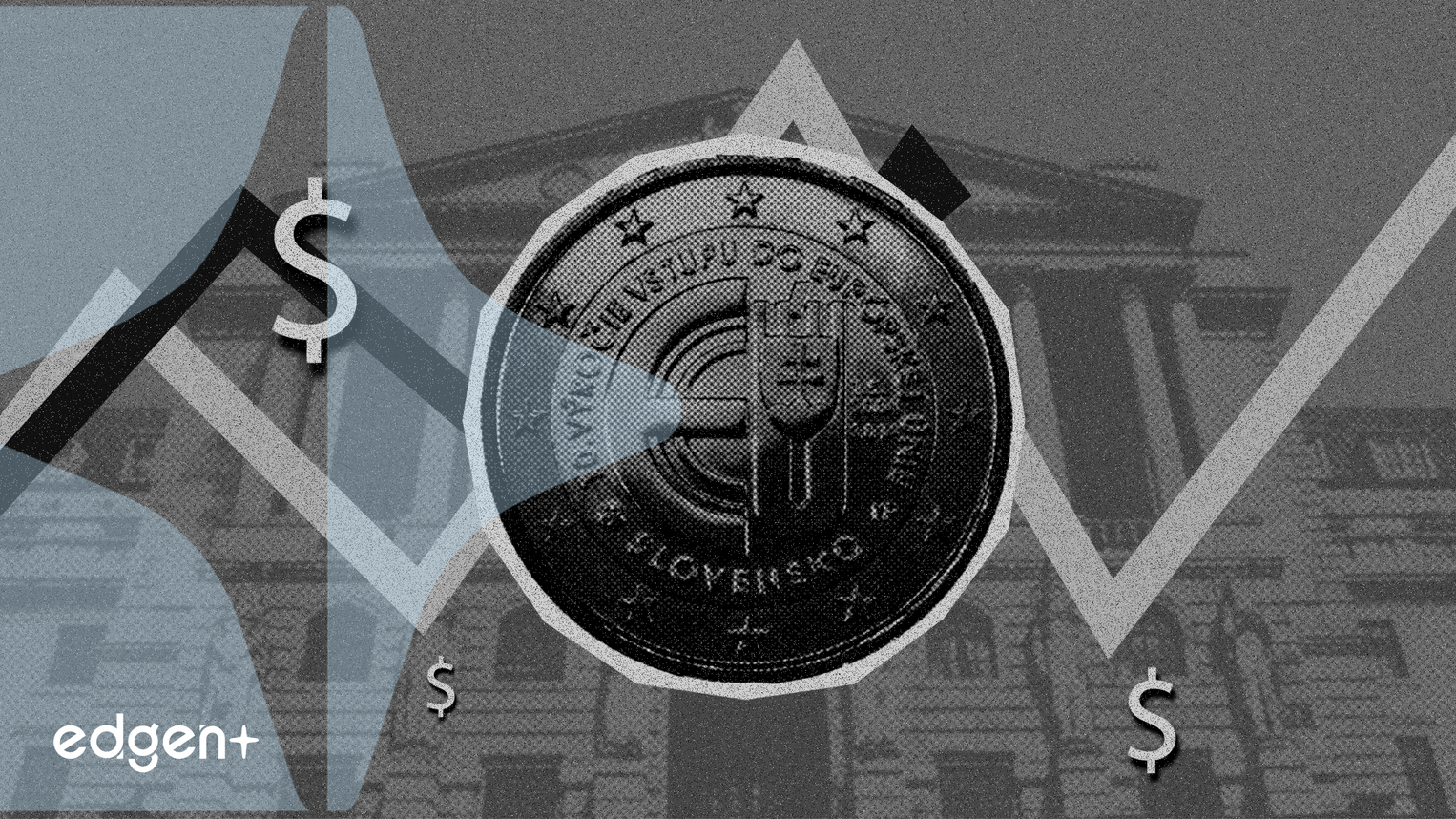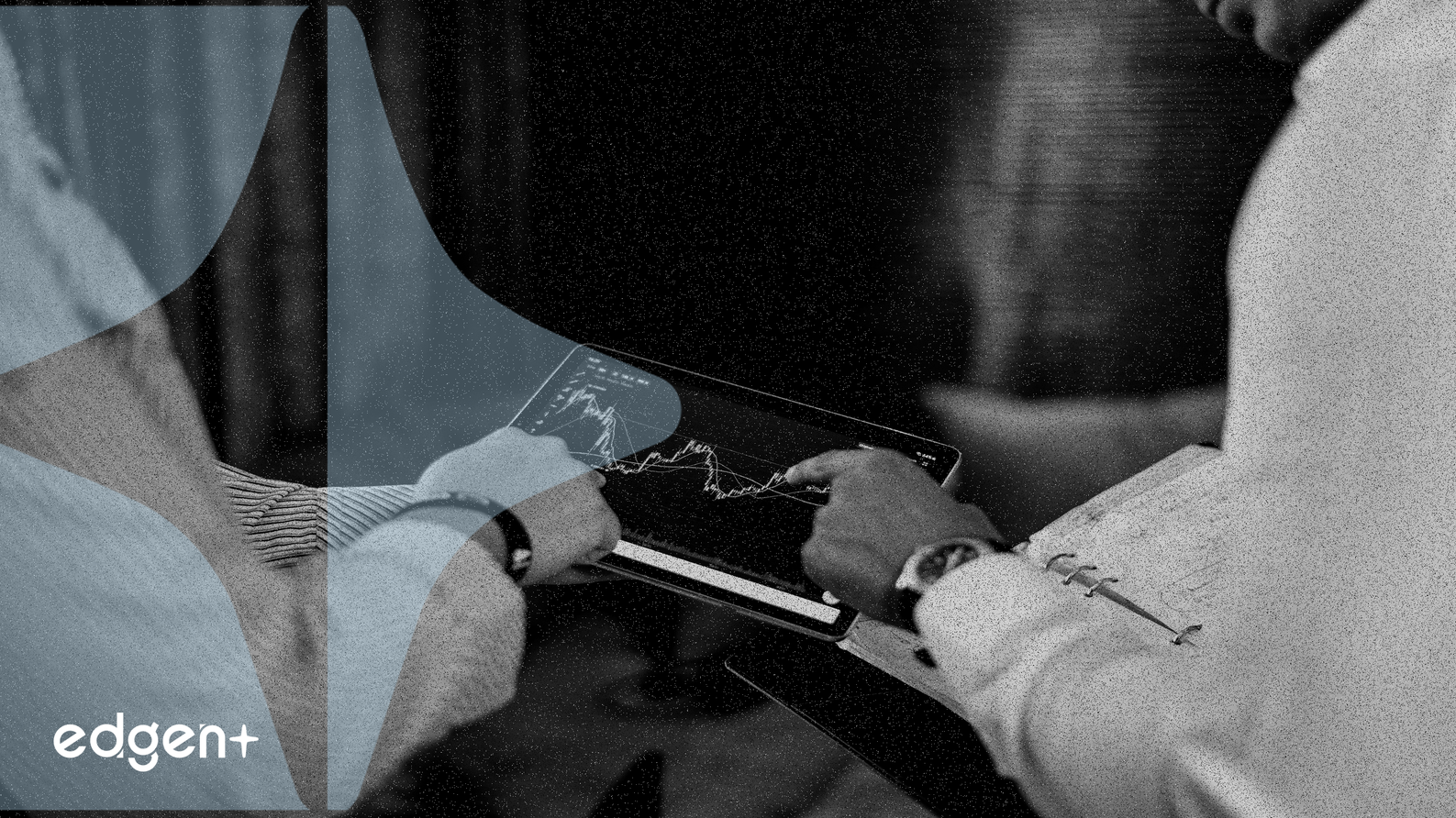Products
Trading Strategies
Markets
Ask AI About BRK.A

No Data Yet

## Q3 Performance Overview The **GreensKeeper Value Fund** recorded a +4.0% return in the third quarter of 2025, bringing its year-to-date performance to +0.2% net of all fees and expenses. The fund, which typically maintains a concentrated portfolio of 15-20 stocks across various sectors and market capitalizations, aims to deliver absolute returns in excess of both the **S&P/TSX Index** and the **S&P 500 Index** over the long term. ### Alphabet Leads Contributions Amid AI Expansion and Legal Victory **Alphabet Inc. (GOOG)** emerged as the fund's top contributor, with its shares advancing +37.3% during the quarter. This performance was largely attributed to significant momentum in the company's **Gemini AI** models and a favorable court ruling in an antitrust case. **Alphabet**'s **Gemini AI** models have shown increasing market penetration, gaining share in global search instances. The recent launch of **Gemini Enterprise**, which integrates advanced AI capabilities with enterprise security and data warehousing, underscores the company's strategic focus on the business segment. Investors have noted that **Alphabet**'s robust distribution networks, proprietary hardware, and strong balance sheet position it advantageously in the evolving AI market. On September 15, 2025, **Alphabet**'s market capitalization surpassed $3 trillion, marking it as the third U.S. company to reach this milestone, driven by a 4.3% daily gain. The stock's year-to-date gain of 32% significantly outpaced the **S&P 500**'s 12.5% return, reflecting strong investor confidence in its AI expansion and cloud unit revenue growth, which increased nearly 32% in Q2. ### Fiserv and Novo Nordisk Face Growth Challenges Conversely, **Fiserv Inc. (FI)** was the largest detractor for the fund, with its stock declining -25.2% over the quarter. The decline was primarily linked to a deceleration in the volume growth of its **Clover** platform, which processes payments for small, mid-sized, and large businesses. Despite this slowdown, **Fiserv**'s adjusted revenue grew 8% to $5.2 billion in the second quarter of 2025, and the company projects continued double-digit growth with improving cash flow. Management has demonstrated confidence through an increased share repurchase program, committing to approximately 130% of free cash flow for buybacks in 2025. Some analyses suggest the current sell-off may be overdone, given the company's high margins and robust free cash flow, indicating the stock may be trading at attractive valuation levels. **Novo Nordisk (NVO)** was the second-largest detractor, experiencing a -19.6% decline. The pharmaceutical company faced headwinds from lowered guidance, persistent use of compounded **GLP-1** medications by competitors, and increased market competition. The U.S. **GLP-1** market has seen intensified competition, with **Eli Lilly**'s **Zepbound** capturing a significant market share. In response, **Novo Nordisk** appointed a new CEO in May 2025, **Maziar Mike Doustdar**, who is spearheading a strategic pivot towards operational efficiency, global diversification, and accelerated research and development. The company is prioritizing the development of **amycretin**, a once-weekly **GLP-1** and amylin receptor agonist with potential for substantial weight loss, as a key differentiator. ### Strategic Portfolio Adjustments: Cboe Exit and Adobe Entry During the quarter, the **GreensKeeper Value Fund** completely exited its position in **Cboe Global Markets Inc. (CBOE)**. The decision stemmed from a perception that the shares were fully valued, despite a strong historical performance, with the stock appreciating 300% since its initial purchase in 2020. Concerns were raised regarding the proliferation of zero days to expiration (**0DTE**) option trading, particularly the increased retail investor involvement, suggesting the company might be "overearning" in certain segments. The fund anticipates potential contraction in trading volumes of these shorter-duration contracts during a prolonged market downturn. Conversely, the fund initiated a new purchase of **Adobe Inc. (ADBE)**, based on the belief that the company is well-positioned to integrate AI products and benefits from high switching costs for its creative and document tools. **Adobe** demonstrated robust performance in Q2 FY2025, with revenue reaching $5.87 billion, an 11% year-over-year increase, and non-GAAP earnings per share surpassing consensus estimates. The company's AI-powered offerings, such as **Adobe Firefly** and **GenStudio**, are showing promising adoption rates and are expected to contribute significantly to new annual recurring revenue. Additionally, **ICON Plc (ICLR)** was the fund's second top contributor, advancing +20.3% in the quarter. **GreensKeeper** had acquired **ICON** shares earlier in the year, recognizing that the market's reaction to potential pharmaceutical R&D spending reductions was excessively punitive, despite short-term industry uncertainties. ### Broader Market Context and Investment Philosophy The **GreensKeeper Value Fund** adheres to a value investing style and has historically maintained caution during periods of market speculation and elevated risk-taking, characterizing the current environment as "frothy" with soaring valuations in certain asset classes. The fund's objective is to acquire high-quality companies with a substantial margin of safety, eschewing benchmarks to selectively invest where value is identified. This selective approach is evident in the divergence of performance among its holdings, reflecting the mixed sentiment within the broader market, which sees bullish trends in AI and specific technology stocks juxtaposed with bearish pressures on others. ### Outlook and Key Considerations Looking ahead, investors will closely monitor **Adobe**'s continued integration and monetization of its AI offerings and its ability to sustain Digital Media ARR growth amidst competition. For **Novo Nordisk**, the focus will be on the Q3 2025 **Wegovy** sales, the results of **amycretin**'s Phase 3 trials, and the anticipated 2026 launch of oral semaglutide as the company strives to regain market share and leadership in the **GLP-1** segment. **Fiserv**'s recovery in its **Clover** business volume and the impact of its share buyback program on long-term shareholder returns will also be key indicators. The broader market is expected to remain cautious, with investment decisions likely emphasizing fundamental performance and risk management in a volatile environment characterized by ongoing technological shifts and evolving competitive landscapes.

## Market Overview: Sectoral Divergence Amid Corporate Restructuring and Speculative Surge U.S. equities experienced a mixed trading period, characterized by significant corporate actions and a notable uptick in speculative investments, even as the broader financials sector demonstrated limited movement due to lingering questions about the durability of the current deal and securities boom. The **S&P 500** achieved its 15th record high for the year, and the tech-heavy **Nasdaq Composite** also reached a new peak, largely propelled by strong performances in specific sectors and a renewed appetite for risk. ## Key Corporate Developments Drive Sectoral Shifts Several pivotal corporate events recently reshaped segments of the market: ### Berkshire Hathaway Bolsters Energy-Chemicals Portfolio with OxyChem Acquisition **Berkshire Hathaway Inc.** (NYSE: BRK.A, BRK.B) announced a definitive agreement to acquire **Occidental Petroleum's** (NYSE: OXY) chemical business, **OxyChem**, for **$9.7 billion** in an all-cash transaction. This strategic move is poised to strengthen Berkshire's non-insurance operations and utilize a portion of its substantial cash reserves, which exceeded $340 billion. For Occidental, the divestiture is critical for debt reduction, with the company intending to allocate **$6.5 billion** of the proceeds to lower its principal debt below **$15 billion**, a target set following its December 2023 CrownRock acquisition. Despite the financial deleveraging benefits, shares of **Occidental Petroleum** declined over **6%** on the announcement and approximately **10%** year-to-date in 2025, as investors considered OxyChem a valuable cash-flow generator. OxyChem contributed **$1.1 billion** in operating income in fiscal year 2024, representing about 16% of Occidental’s total income. The deal's implied multiple for OxyChem is just over 8 times and 7 times expected EBITDA for 2025 and 2026, respectively. ### Bullish Launches Crypto Options Trading, Fueling Stock Advance **Bullish** (NYSE: BLSH), a cryptocurrency-exchange operator, experienced a sharp advance in its stock price following the announcement of its plans to launch crypto options trading on October 8, 2025. Shares of **Bullish** gained **10.18%** to **$66.99**, significantly outperforming the broader market. This initiative positions Bullish to offer European-style Bitcoin options, with future expansion planned for Ether and multi-asset indices like the **CoinDesk 20**. The introduction of **Bullish Portfolio Margining (BPM)** aims to enhance capital efficiency and risk management for institutional clients, who will use their entire portfolio as collateral across various products. The company has secured 14 leading trading partners, including **Galaxy Digital** and **Flow Traders**, to ensure robust liquidity. Bullish’s regulatory approvals, including a **New York BitLicense**, enable operations in 20 U.S. states, underscoring its commitment to a regulated environment crucial for institutional adoption in the rapidly maturing Web3 ecosystem. ### Fair Isaac Reshapes Credit-Scoring Industry with Direct Licensing Model **Fair Isaac Corporation** (NYSE: FICO) initiated a transformative shift in the mortgage industry by introducing its **Mortgage Direct License Program**. This program allows mortgage lenders and tri-merge resellers to directly acquire and distribute **FICO Scores**, circumventing the traditional intermediary role of the three major nationwide credit bureaus: **Experian** (LSE: EXPN), **Equifax** (NYSE: EFX), and **TransUnion** (NYSE: TRU). The market reaction was immediate and pronounced; **FICO's** stock soared by as much as **22%**, while shares of **Equifax** plunged up to **12%**, **TransUnion** fell as much as **12%**, and **Experian's** U.S.-listed shares declined up to **8%**. Analysts project that this strategic pivot could result in a **10% to 15%** hit to the credit bureaus' earnings. FICO's new pricing models, such as a **$4.95** per-score royalty coupled with a **$33** per-borrower fee for funded loans, represent an approximate 50% reduction from previous average per-score fees, aiming to inject greater price transparency and competition into the mortgage lending ecosystem. This move strengthens FICO's market position, enhancing its pricing power and control over its proprietary scores. ## Analysis of Market Reaction: Risk Appetite and Industry Disruption The market's reaction to these events highlights a dichotomy: a cautious stance on traditional financial sector growth contrasted with a robust embrace of disruptive innovation and speculative opportunities. The **Berkshire Hathaway** acquisition, while substantial, underscores a continued trend of strategic M&A in mature industries, with **Occidental's** share decline reflecting concerns over shedding a consistent cash-flow generator. The surge in **Bullish** shares following its options trading announcement reflects investor optimism regarding the institutionalization and expansion of the cryptocurrency market. The introduction of sophisticated derivatives by a regulated entity signals a significant step towards greater liquidity and price discovery in digital assets. **Fair Isaac's** direct licensing program represents a fundamental reordering of the credit-scoring landscape. By going direct to lenders, FICO asserts greater control over its intellectual property and aims to capture a larger share of the revenue, directly challenging the long-standing business models of the major credit bureaus. This disruption was anticipated to create a more transparent and competitive environment for mortgage lenders, although some industry groups expressed concern over potential hidden costs. ## Broader Context and Implications: A Return to Speculative Excess? Beyond specific corporate actions, the broader market has been characterized by a notable increase in speculative activity. The **S&P 500's** and **Nasdaq's** record highs have coincided with a resurgence in meme stocks and a heightened investor appetite for risk. > "Garbage stocks have risen aggressively. This is an environment like early 2021, when the consensus rapidly became that you should buy frauds because they will squeeze higher. People seriously talked about fraud as an asset class," noted **Bronte Capital** in a recent update. **Goldman Sachs's Speculative Trading Indicator (STI)** has risen sharply in recent months, reflecting elevated trading volumes in unprofitable stocks, penny stocks, and those with high enterprise value-to-sales multiples. While the **STI** remains below its peaks of January 2000 and February 2021, other indicators of heightened risk appetite are evident. Call options, often a barometer of bullish sentiment, recently accounted for **61%** of all option volumes, the highest proportion since 2021. Furthermore, first-day returns for Initial Public Offerings (IPOs) have "ballooned," and **Special Purpose Acquisition Companies (SPACs)** saw **$9 billion** in issuance in the second quarter of 2025, marking their most active quarter since Q1 2022. This confluence of factors, coupled with some of the sharpest short squeezes on record, signals a robust, albeit potentially unsustainable, risk-on environment. Goldman Sachs strategists warn that while past increases in speculative activity have often preceded above-average short-term **S&P 500** returns, returns typically faltered on a 24-month horizon, potentially creating a headwind for the index. ## Expert Commentary: Divergent Views on Market Sustainability Analysts and strategists offer varied perspectives on the current market dynamics. While the **Berkshire Hathaway** deal was largely seen as a financially prudent move leveraging the conglomerate's significant cash pile, the broader sentiment regarding the financials sector remains cautious. Ratings agencies **Moody's** and **Fitch Ratings** acknowledged the positive impact of the OxyChem sale on **Occidental's** debt reduction goals. Conversely, the rapid appreciation of speculative assets draws scrutiny. **Oppenheimer** analysts previously cautioned about **Bullish's** inflated valuation post-IPO, despite its growth prospects. The divergence in valuations, with **FICO** trading at a forward P/E of **52 times** while projecting robust EPS and revenue growth, contrasts with the more conservative multiples observed in traditional energy and chemical sectors. ## Looking Ahead: Navigating Corporate Evolution and Market Volatility The coming weeks will likely see continued attention on the integration of **OxyChem** into **Berkshire Hathaway's** portfolio and **Occidental's** progress in debt reduction. In the credit-scoring arena, the full implications of **FICO's** direct licensing model for mortgage lenders and the long-term impact on the major credit bureaus will unfold, with potential for this model to extend to other lending segments. For the cryptocurrency market, the expansion of sophisticated derivative products by regulated entities like **Bullish** will be a key indicator of its continued maturation and institutional adoption. Investors will also closely monitor the sustainability of the current speculative fervor. The evolution of **Goldman Sachs's Speculative Trading Indicator** and the behavior of meme stocks and other high-risk assets will provide crucial insights into broader market sentiment and potential inflection points for the **S&P 500** and **Nasdaq Composite**. The tension between targeted corporate growth, disruptive innovation, and the potential for speculative excess will define market narratives in the near to medium term.

## Market Stability Amidst Macroeconomic Undercurrents U.S. equities registered modest gains, with major indexes such as the **S&P 500**, **Dow Jones Industrial Average**, and **Nasdaq Composite** showing limited overall change. This relative stability transpired despite the backdrop of an ongoing U.S. government partial shutdown, which analysts suggest has not significantly impacted corporate profits or investor sentiment in the short term. However, the market observed considerable volatility in individual stocks, driven by significant corporate news and strategic shifts across various sectors. ## Semiconductor Sector Explores Strategic Alliances Shares of **Intel Corporation** (**INTC**) and **Advanced Micro Devices** (**AMD**) both advanced following reports of early discussions regarding AMD potentially becoming a customer for Intel's nascent foundry business. According to Semafor, these talks, while in preliminary stages, suggest a potential diversification of AMD's supply chain, which currently relies heavily on **Taiwan Semiconductor Manufacturing (TSM)**. Intel, under CEO Lip-Bu Tan, has actively pursued deals to revitalize its manufacturing arm, exemplified by a recent partnership with **Nvidia (NVDA)** for co-development of PC and data center chips, coupled with a $5 billion investment from Nvidia. Additionally, the U.S. government had previously acquired a 10% stake in Intel, underscoring strategic interest in the chipmaker. Intel's stock has demonstrated considerable momentum, climbing 5% in afternoon trading on Wednesday and surging approximately 77% year-to-date, reflecting increasing investor optimism regarding its strategic initiatives. ## Credit Reporting Industry Undergoes Disintermediation **Fair Isaac Corporation (FICO)** witnessed a significant surge in its stock, with gains between 20% and 24%, after announcing its "FICO Mortgage Direct License Program." Effective October 1, 2025, this initiative allows mortgage lenders to acquire FICO scores directly, bypassing traditional credit reporting agencies (**CRAs**) like **TransUnion (TRU)** and **Equifax (EFX)**. This strategic pivot introduces two alternative pricing models: a performance-based model with a $4.95 royalty fee per score (approximately 50% reduction from previous reseller fees) and a $33 funded-loan fee, or a flat $10 per score. The move, aimed at increasing price transparency and reducing costs in the mortgage industry, was lauded by Federal Housing Finance Agency (FHFA) Director Bill Pulte. In response to FICO's announcement, shares of **TransUnion** plummeted approximately 12.5%, and **Equifax** declined around 8.7%, highlighting the profound implications of this disintermediation for the established business models of credit bureaus. ## Starbucks Initiates Comprehensive Restructuring for Profitability **Starbucks Corporation (SBUX)** shares rose as the company progresses with its "Back to Starbucks" initiative, a comprehensive strategy spearheaded by CEO Brian Niccol to enhance sales and profitability. The plan involves a $1 billion restructuring, announced in September 2025, which includes the closure of hundreds of underperforming stores across North America and Europe and a reduction of approximately 900 non-retail corporate positions. While these measures are expected to incur short-term costs, they aim to reallocate resources towards long-term growth drivers, such as store remodels and intensified digital and AI integration. Despite reporting a 2% decline in global comparable store sales and a 45% decrease in Q3 Fiscal Year 2025 earnings per share (EPS) to $0.50—missing analyst expectations of $0.65—investors showed confidence in the turnaround plan. The company also announced its fifteenth consecutive annual dividend hike, a marginal 1.6% increase, signaling a commitment to shareholder returns amidst aggressive transformation. ## Energy Sector Sees Major Asset Divestment **Occidental Petroleum (OXY)** shares experienced a decline of more than 6% after **Berkshire Hathaway (BRK.A, BRK.B)**, its largest investor, agreed to acquire Occidental's chemicals unit, OxyChem, for $9.7 billion in an all-cash deal. This transaction marks Berkshire Hathaway's second-largest foray into the chemicals industry. OxyChem, a producer of essential industrial chemicals like chlorine and caustic soda, has a defensive demand profile. Analysts at Roth MKM noted that while the divestment provides immediate liquidity, with Occidental planning to use $6.5 billion of the proceeds to pay down debt, it may hinder Occidental's free cash flow growth, as OxyChem was projected to be a significant contributor to earnings expansion. Investors reacted to the sale with concern regarding Occidental's future earnings potential, despite the company's stated goal of resuming share buybacks post-debt reduction. The deal is scheduled to close in the fourth quarter. ## Utilities Grapple with Regulatory and Financial Pressures **Edison International (EIX)** experienced a 3.3% decline in its stock price following a downgrade from Jefferies to Hold from Buy, with its price target reduced from $70 to $57. The downgrade cited elevated wildfire-related risk, exposure to Eaton Fire liabilities, and a projected slower earnings growth profile compared to peers such as **PG&E (PCG)**. Jefferies analyst Julien Dumoulin-Smith highlighted that legislative reforms like SB 254 offer some relief but could shift costs to shareholders. Concurrently, Edison's shares also fell after the Trump administration reportedly canceled a $600 million federal grant intended for Southern California Edison to upgrade 100 miles of electric transmission lines. This decision, part of a broader cancellation of over $3.1 billion in energy initiatives, underscored increasing financial and regulatory pressures on the utility sector. ## Outlook: Corporate Strategy and Macroeconomic Vigilance Looking ahead, the market will continue to monitor the impact of corporate strategic decisions and the broader macroeconomic environment. The ongoing U.S. government shutdown, while not causing immediate widespread market panic, remains a point of uncertainty. Investors will closely watch for further developments in the semiconductor industry's potential collaborations, the evolving landscape of credit reporting, the execution of major corporate restructuring plans, and the financial implications of asset reconfigurations in the energy sector. Upcoming economic reports and company earnings will be crucial in shaping market sentiment in the coming weeks. The resilience of technology and healthcare sectors, noted for their strong performance, may continue to offer stability amidst these varied corporate and macroeconomic currents.

## Summary of Key Developments **Berkshire Hathaway Inc.** (NYSE: **BRK.A**, **BRK.B**) is reportedly in advanced negotiations to acquire **Occidental Petroleum Corporation's** (NYSE: **OXY**) **OxyChem** unit. This potential transaction, valued at approximately **$10 billion**, would represent **Berkshire Hathaway's** largest acquisition since 2022, signaling a significant strategic move for both conglomerates. ### The Proposed Transaction in Detail **Berkshire Hathaway**, under the continued influence of **Warren Buffett**, is nearing a deal to integrate **OxyChem**, the petrochemical division of **Occidental Petroleum**, into its extensive portfolio. Sources suggest the finalization of this agreement could occur within days. This acquisition would follow **Berkshire's** **$11.6 billion** purchase of insurer Alleghany in 2022. **OxyChem** is a substantial entity within the chemicals sector, having generated approximately **$5 billion** in revenue over the past year. Projections indicate the unit is expected to deliver **$800–$900 million** in pretax income this year. Its production encompasses vital materials such as chlorine, PVC resin, and various vinyl products, which are crucial for applications in water treatment, medical supplies, and construction industries. Market reactions saw **Berkshire Hathaway Inc.** Class B shares ($BRK-B) close at **$502.74** on September 30, 2025, recording a modest daily gain of **0.70%**. Conversely, **Occidental Petroleum's** stock experienced a decline of **1.8%** following the reports of the potential divestiture. ### Strategic Rationale and Market Implications For **Berkshire Hathaway**, the acquisition of **OxyChem** aligns with its long-standing investment philosophy of acquiring businesses with predictable earnings and resilient market positions. The inclusion of **OxyChem** would significantly expand **Berkshire's** industrial portfolio, diversifying its revenue streams. **CEO Greg Abel**, recognized for his extensive background in the energy sector, is strategically positioned to oversee the integration of this asset. **Berkshire's** formidable cash reserves, reported at **$344 billion** as of the end of June, provide ample financial strength to fund this acquisition without undue strain. Notably, **Berkshire** already holds a substantial **28.2%** stake in **Occidental Petroleum**, valued at over **$11 billion**. For **Occidental Petroleum**, the divestiture of **OxyChem** is a critical component of its strategy to aggressively reduce its significant debt burden. This debt largely originated from its **$55 billion** acquisition of Anadarko in 2019. **Occidental** has already made substantial progress, cutting its debt from nearly **$49 billion** to approximately **$24 billion**. The anticipated **$10 billion+** in proceeds from the **OxyChem** sale are earmarked for further debt reduction, addressing remaining 2025 debt maturities, and funding strategic investments in carbon capture technology and renewable energy initiatives. While **OxyChem** historically offered revenue diversification and acted as a buffer against volatile oil markets by contributing roughly **19%** of total sales, its sale will undeniably increase **Occidental's** exposure and reliance on fluctuating oil prices. Nevertheless, this move is expected to enable **Occidental** to sharpen its focus on core oil and gas operations, particularly within the Permian Basin, and potentially enhance shareholder returns through increased dividends and share buybacks. Since July 2024, **Occidental** has repaid **$7.5 billion** in debt, resulting in an estimated **$410 million** in annual interest cost savings. ### Broader Context and Future Outlook The proposed transaction reflects a broader industry trend where major players in the energy and chemicals sectors are re-evaluating their asset portfolios to optimize financial structures and strategic focus. **Occidental's** proactive debt reduction strategy, evidenced by **$950 million** from Permian Basin and Rockies asset sales and an additional **$580 million** expected from Midland Basin gas gathering assets, underscores its commitment to deleveraging. For **Berkshire Hathaway**, this acquisition highlights its ongoing capacity to deploy substantial capital into stable, cash-generating businesses, even as **Warren Buffett** prepares to transition from his CEO role at the close of 2025. **Berkshire's** year-to-date return as of September 30, 2025, stood at **10.91%**, in comparison to the S&P 500's **13.72%**. Over a five-year period, **BRK-B** has delivered a gain of **136.09%**, outperforming the benchmark's **98.88%**. Market sentiment surrounding the deal is nuanced, ranging from mixed to positive. While **Occidental's** stock experienced a minor decline post-announcement, the prospect of significant debt reduction and potential enhancements to shareholder returns could foster a more favorable long-term view. For **Berkshire**, the acquisition is perceived as consistent with its strategic investment framework, offering predictable earnings and a stable asset. The transaction may attract scrutiny from antitrust regulatory bodies, given the increased focus on mergers and acquisitions within the chemicals and energy sectors by agencies such as the Federal Trade Commission (FTC). However, the FTC has historically shown less inclination to challenge horizontal mergers involving energy exploration and production companies. Moving forward, investors will closely monitor the successful finalization of the deal, **Occidental's** subsequent progress in debt reduction, and any announcements regarding capital allocation strategies, including dividends and share buybacks. For **Berkshire**, the successful integration of **OxyChem** into its industrial holdings and its anticipated contribution to earnings will be key performance indicators.

## Berkshire Hathaway Pauses Buybacks Amid Valuation Concerns **Berkshire Hathaway**, under the leadership of **Warren Buffett**, has ceased repurchasing its own **Class A** and **Class B** shares for 13 consecutive months, spanning from June 2024 through June 2025. This decision marks a significant shift for a company that had previously spent approximately $78 billion over 24 quarters (July 2018 – June 2024) to reduce its outstanding share count by over 12%. The primary rationale for this pause, according to value investing principles, is the current valuation of **Berkshire Hathaway** stock, which has consistently traded at a 60% to 80% premium to its book value during this period, compared to a 30% to 50% premium in prior years. Despite a near-record cash pile, including U.S. Treasuries, amounting to $344.1 billion, **Buffett** has indicated no inclination to acquire **Berkshire** shares at these elevated valuations. Simultaneously, **Berkshire Hathaway** has maintained a position as a net-seller of stocks for 11 consecutive quarters, divesting a cumulative $177.4 billion in equities. This broader selling trend, alongside the halt in internal buybacks, has been interpreted by some market observers as a cautious stance on overall market valuations. > Paul Dietrich, Chief Investment Strategist at **Wedbush**, suggests that **Buffett's** strategy of liquidating stock assets indicates he foresees an approaching market storm, aiming to repurchase shares after a potential market crash. ## Strategic Accumulation in Sirius XM Holdings Amidst its broader market divestitures, **Berkshire Hathaway** has notably intensified its investment in **Sirius XM Holdings (SIRI)**. Recent disclosures via **13Fs** and **Form 4s** reveal significant purchases, including over 5 million shares between July 31 and August 4, and an additional 2.3 million shares in late January and early February. These transactions have elevated **Berkshire Hathaway's** total holdings in the satellite-radio operator to approximately 124.8 million shares, constituting a substantial 37.1% stake in the company. This increased investment signals **Buffett's** continued conviction in **Sirius XM**, even as the stock has faced headwinds, experiencing a decline of approximately 60% since 2022. **Berkshire Hathaway's** estimated average purchase price for its current holdings stands at $26.93, indicating a current unrealized loss given a July 31, 2025 price of $23.00, yet demonstrating a long-term investment horizon. ## Investment Rationale: A "Legal Monopoly" with Predictable Cash Flow **Buffett's** attraction to **Sirius XM** aligns with his preference for companies possessing durable competitive advantages, often termed "economic moats." **Sirius XM** is considered a "legal monopoly" as the sole holder of satellite-radio licenses in the U.S., affording it significant subscription pricing power. The company's revenue mix heavily favors subscriptions, which accounted for 76.8% of its net revenue through the first half of 2025, in contrast to the 19.6% derived from advertising. This subscription-driven model provides a more predictable and stable operating cash flow, particularly resilient during economic downturns when advertising revenues typically contract. Furthermore, **Sirius XM** exhibits a predictable cost structure, with equipment and transmission expenses remaining relatively static irrespective of subscriber numbers. The company also offers a robust dividend yield of 4.7% ($1.08 per share annually), which is well-covered by analyst earnings estimates. From a valuation perspective, **Sirius XM** stands out with a historically low forward price-to-earnings (P/E) ratio of 7.6, particularly noteworthy when compared to the broader **S&P 500's** Shiller P/E ratio, which has reached historically high multiples. ## Sirius XM's Operational Landscape and Future Outlook Despite the strategic investment by **Berkshire Hathaway**, **Sirius XM** has navigated a challenging operational environment. The company reported a 1.9% decrease in revenue for Q2 2025 ($2.11 billion) compared to Q2 2024, slightly missing analyst expectations. Earnings per share (EPS) for Q2 2025 declined 41.9% to $0.61. The first quarter of 2025 also saw a 4% revenue drop, a 15% profit tumble, and a year-over-year subscriber decrease of 303,000. However, **Sirius XM** has outlined a strategic plan for 2025 focused on optimizing core subscription services, enhancing advertising capabilities, and improving operational efficiency. The company reaffirmed its full-year 2025 guidance, projecting approximately $8.5 billion in total revenue, $2.6 billion in adjusted **EBITDA**, and $1.15 billion in free cash flow (**FCF**). Aggressive cost-cutting measures are in progress, targeting an additional $200 million in annualized savings by year-end 2025, building on $350 million achieved in 2023 and 2024. The company also plans to reduce its debt by approximately $700 million in 2025, aiming for a leverage ratio of 3.6x. A key business consideration for **Sirius XM** remains the impending contract renewal of high-profile talent **Howard Stern** in late 2025, a decision with an estimated value of $500 million. The company is actively pursuing new programs and strategic partnerships, such as integration into **Tesla's** operating system, to attract and retain subscribers. ## Market Reaction and Forward Implications **Warren Buffett's** continued accumulation of **Sirius XM** shares, despite recent underperformance, underscores a strong belief in the company's long-term value proposition and its fundamental business model. This involvement often acts as a stabilizing factor, potentially attracting further institutional interest. Analyst **Matthew Harrigan** of **Benchmark** issued a price target of $32 per share in February 2025, suggesting a potential 44% upside from current levels. Retail sentiment on platforms like **Stocktwits** also saw a notable increase in bullishness following **Berkshire's** disclosure of its increased stake. Looking ahead, the market will closely monitor **Sirius XM's** progress on its strategic initiatives, particularly its ability to stem subscriber churn and execute on cost efficiencies. The outcome of the **Howard Stern** contract negotiations will also be a focal point. For the broader market, **Berkshire Hathaway's** cautious stance on its own stock valuation and its sustained net selling activity could imply a broader apprehension regarding market excesses, signaling a continued search for undervalued assets with robust fundamentals in the current environment.

## Market Reaction to Nucor's Q3 Guidance and Berkshire Hathaway Investment **Nucor Corporation (NUE)** experienced a notable decline in its stock price on September 18, 2025, falling **6.09%**, or **$8.70**, to close at **$134.10**. This market movement followed the steelmaker's announcement of third-quarter earnings guidance that fell below analyst expectations. The downturn occurred amidst the backdrop of a significant, albeit previously disclosed, investment by **Warren Buffett's Berkshire Hathaway (BRK.A, BRK.B)**, which had recently increased its stake in the company. ## Earnings Guidance and Market Response **Nucor** anticipates third-quarter earnings per diluted share to be between **$2.05 and $2.15**, a figure substantially lower than the consensus analyst estimate of **$2.63**. This projected decline follows a second quarter where the company reported a profit of **$2.60 per share**. The company attributed the expected earnings decrease across all three of its operating segments: the **steel mills segment** faces lower volumes and margin compression, the **steel products segment** anticipates higher average costs per ton, and the **raw materials segment** expects reduced profitability in scrap processing operations. This guidance fueled immediate market anxiety regarding Nucor's near-term profitability outlook and broader industry headwinds. Simultaneously, the market continued to process **Berkshire Hathaway's** strategic acquisition of approximately **6.6 million shares** of **NUE**, valued at around **$856.8 million**, as detailed in its Q2 2025 13F filing. While this investment constitutes only **0.3%** of Berkshire's vast portfolio, it represents a significant vote of confidence from a renowned value investor in a sector often characterized by volatility. ## Broader Context and Strategic Positioning **Nucor** stands as North America's largest and most diversified steel company, primarily leveraging flexible **electric arc mini-mills** for steel recycling. This operational model contributes to its position as one of the lowest-cost producers in the industry. The company is recognized as a "**Dividend King**," having consistently increased its dividends for over five decades, a testament to its financial resilience and disciplined capital allocation even through cyclical downturns in the steel industry. As of Q3, **Nucor** repurchased approximately **0.7 million shares** at an average price of **$140.46**, contributing to **$985 million** returned to shareholders year-to-date through buybacks and dividends. Despite the recent share price drop, the underlying rationale for **Buffett's** investment appears rooted in **Nucor's** long-term strategic advantages. The company has a substantial **$3 billion capital investment plan for 2025**, part of a larger **$6.5 billion capex plan through 2027**, aimed at expanding into high-margin segments. These investments target growing demand from sectors such as **electric vehicles (EVs)** and **data centers**, where steel underpins critical infrastructure. Furthermore, **Nucor's** vertical integration and innovative **EAF technology** are seen as buffers against raw material volatility, while initiatives like **Econiq™** align with decarbonization trends. Market observers note that while **NUE** stock had surged **22% year-to-date** prior to the Q3 guidance, **Buffett's** Q2 purchases largely occurred when the stock was trading lower. This suggests a "buying the dip" strategy, capitalizing on an undervalued asset rather than chasing momentum. Analysts point to **Nucor's** valuation, which trades at less than **1x forward sales** (projected at $34 billion for 2026), significantly below its 10-year average of **1.2x**, despite a current Price-to-Earnings (P/E) ratio of **26.2x** that exceeds the steel sector average of **4.5x**. This premium valuation reflects investor confidence in Nucor's structural advantages and ability to outperform peers, bolstered by a **50% tariff** on imported steel that shields domestic players. ## Looking Ahead The immediate focus for investors will be **Nucor's** official third-quarter earnings release, scheduled for **October 27, 2025**. This report will provide further clarity on the magnitude of the challenges faced across its operating segments and the impact on profitability. Longer-term, the market will monitor the progress of **Nucor's** significant capital expenditure projects and their ability to generate returns as demand from infrastructure, clean energy, and data center construction continues to evolve. The strategic implications of **Berkshire Hathaway's** sustained confidence in **Nucor** reinforce the narrative that the steelmaker, despite cyclical pressures, possesses fundamental strengths that may appeal to patient, value-oriented investors over an extended horizon.